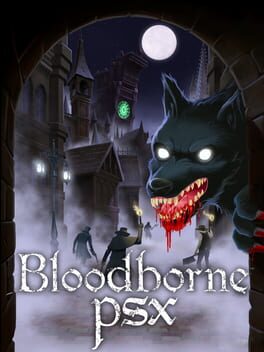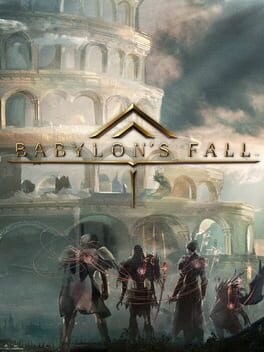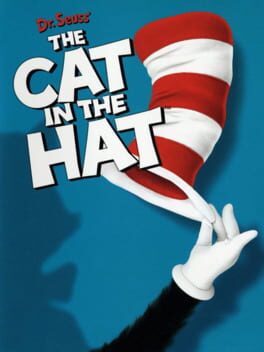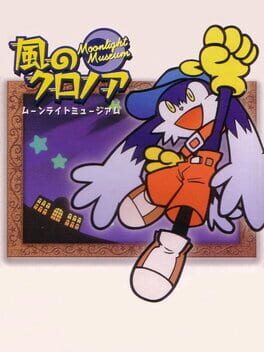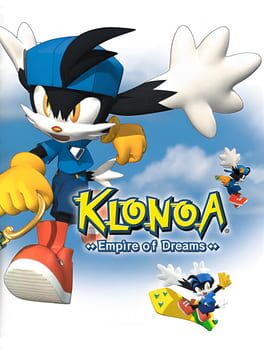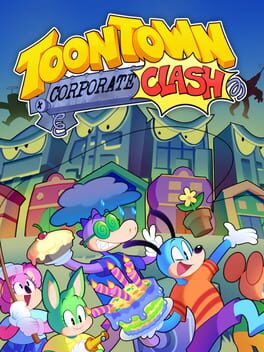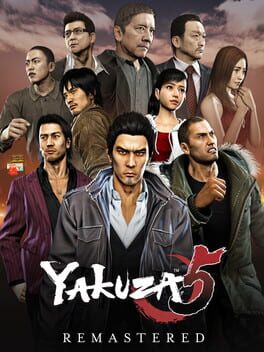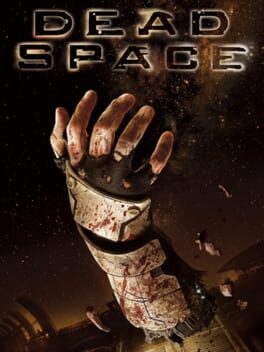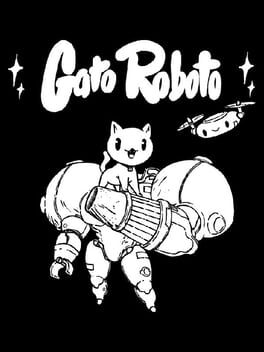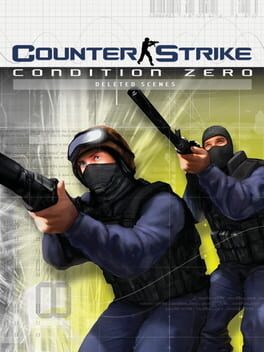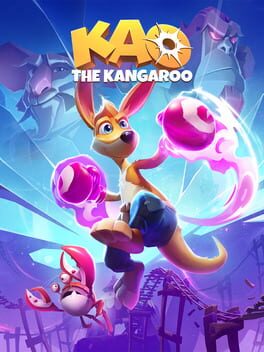Kremdanieko
2022
2022
1986
As a fan of the Zelda games, it's taken me an almost shocking amount of time to properly indulge in the original title of the series. The game that every successive game still takes ideas and concepts from to form the baseline core of this longstanding series.
The Legend of Zelda is an interesting relic from its time. Relatively quaint and rather short for its massive franchise, the game generally manages to not overstay its welcome, however certain elements of the game are purposefully obtuse, some to the point of being a bit unfair without some sort of guide. This is mostly only an issue with minor caves, but unfortunately also an issue with discovering the entrance to one of the major required levels of the game.
I'd hesitate to say it succeeds in making the journey feel like a proper adventure with its shockingly small map, but discovering secrets and powering Link up throughout is generally satisfying overall, and being able to discover late game dungeons before even finding earlier ones, and challenging yourself with them gives a sense of freedom that other Zelda games still fail to replicate for the most part.
Unfortunately, the game gets rather frustrating in later levels and even in the overworld with certain enemies seemingly designed to do nothing but frustrate and get in the way, several with awkward random movements that make it hard to land hits without getting hurt yourself.
A decent curiosity to be sure, one worth visiting if you're already a fan of Zelda and want to peek into where it all began, however it's only something I could possibly reccommend to people with patience and a tolerance for older, stiffer games.
The Legend of Zelda is an interesting relic from its time. Relatively quaint and rather short for its massive franchise, the game generally manages to not overstay its welcome, however certain elements of the game are purposefully obtuse, some to the point of being a bit unfair without some sort of guide. This is mostly only an issue with minor caves, but unfortunately also an issue with discovering the entrance to one of the major required levels of the game.
I'd hesitate to say it succeeds in making the journey feel like a proper adventure with its shockingly small map, but discovering secrets and powering Link up throughout is generally satisfying overall, and being able to discover late game dungeons before even finding earlier ones, and challenging yourself with them gives a sense of freedom that other Zelda games still fail to replicate for the most part.
Unfortunately, the game gets rather frustrating in later levels and even in the overworld with certain enemies seemingly designed to do nothing but frustrate and get in the way, several with awkward random movements that make it hard to land hits without getting hurt yourself.
A decent curiosity to be sure, one worth visiting if you're already a fan of Zelda and want to peek into where it all began, however it's only something I could possibly reccommend to people with patience and a tolerance for older, stiffer games.
When you think about licensed games released in the early 2000s for the 6th generation of consoles, you probably don't think of the Cat in the Hat.
However after playing through the game for the first time since I was a very small child I can confidently say that this game maybe shouldn't be slept on quite as much as it is.
There's this genuine sense that the developers cared about the project they were working on. Despite being relatively short with only 10 regular stages, a bonus stage, and 3 almost identical boss fights, each regular level is filled to the brim with visually interesting backgrounds, each stage having its own set of dozens of unique assets slotting in perfectly with its theme.
Character & enemy models are fairly low poly, and there is some level of mismatched aesthetics in regards to general visual consistency, however these did little to impact my enjoyment of the creativity on display.
Mechanically, the game is a 2.5D platformer without a large suite of mechanics. The cat can jump, hover, shoot bubbles to capture enemies or goo and then shoot them at things, stomp the ground with his umbrella, and cower in fear under it. The goo acts as an explosive projectile that can break certain metallic objects as well as regular wooden breakables.
There are some minor hiccups within these mechanics. Turning 180 degrees at a standstill forces you to wait for the turnaround animation before the cat moves, which can be awkward, especially considering this doesn't happen if you turn while in motion. Teleport pads always without fail cause the cat to launch off them slightly, forcing you to stop holding the directional pad in mid air so you don't miss the pad and potentially fall to your doom.
Attempting to aim at objects in the background with a projectile can be finnicky depending on the camera angle you're given, which can cause some frustration if you need to backtrack.
Given its status as a tie-in licensed movie game, it's generally surprising the developers had the foresight to allow you to backtrack throughout any entire level to collect stray collectables you might have missed. This is something I've rarely encountered even in renowned sidescrolling games and I have to give the developers credit for taking this into consideration. On my journey to get 100% in the game I would backtrack in several levels because I missed something, so it's much appreciated.
Unfortunately the audio is a mixed bag. The game features a sleuth of generic stock sounds youv'e heard a million times before, and the soundtrack is a lot of fairly generic "licensed game" music, with some standout moments in each track that made the songs bareable. However the voice acting is surpisingly solid. The majority of voice acting talent is given to the cat (Chris Edgerly) and the goldfish (Nolan North). While this may not be their best performances, it's solid, and you can tell they gave it their all to add emotion to these quite frankly weird looking models.
The Cat in the Hat isn't some magnificent hidden gem waiting to be uncovered by the masses, but it's not deserving of middling to low scores. It's a generally entertaining 2.5D platformer with some well thought out elements to make the ride smooth. Interesting & varied visuals, okay sound design, pretty good level design, and decent mechanics are what makes the game worth a look at the bare minimum.
However after playing through the game for the first time since I was a very small child I can confidently say that this game maybe shouldn't be slept on quite as much as it is.
There's this genuine sense that the developers cared about the project they were working on. Despite being relatively short with only 10 regular stages, a bonus stage, and 3 almost identical boss fights, each regular level is filled to the brim with visually interesting backgrounds, each stage having its own set of dozens of unique assets slotting in perfectly with its theme.
Character & enemy models are fairly low poly, and there is some level of mismatched aesthetics in regards to general visual consistency, however these did little to impact my enjoyment of the creativity on display.
Mechanically, the game is a 2.5D platformer without a large suite of mechanics. The cat can jump, hover, shoot bubbles to capture enemies or goo and then shoot them at things, stomp the ground with his umbrella, and cower in fear under it. The goo acts as an explosive projectile that can break certain metallic objects as well as regular wooden breakables.
There are some minor hiccups within these mechanics. Turning 180 degrees at a standstill forces you to wait for the turnaround animation before the cat moves, which can be awkward, especially considering this doesn't happen if you turn while in motion. Teleport pads always without fail cause the cat to launch off them slightly, forcing you to stop holding the directional pad in mid air so you don't miss the pad and potentially fall to your doom.
Attempting to aim at objects in the background with a projectile can be finnicky depending on the camera angle you're given, which can cause some frustration if you need to backtrack.
Given its status as a tie-in licensed movie game, it's generally surprising the developers had the foresight to allow you to backtrack throughout any entire level to collect stray collectables you might have missed. This is something I've rarely encountered even in renowned sidescrolling games and I have to give the developers credit for taking this into consideration. On my journey to get 100% in the game I would backtrack in several levels because I missed something, so it's much appreciated.
Unfortunately the audio is a mixed bag. The game features a sleuth of generic stock sounds youv'e heard a million times before, and the soundtrack is a lot of fairly generic "licensed game" music, with some standout moments in each track that made the songs bareable. However the voice acting is surpisingly solid. The majority of voice acting talent is given to the cat (Chris Edgerly) and the goldfish (Nolan North). While this may not be their best performances, it's solid, and you can tell they gave it their all to add emotion to these quite frankly weird looking models.
The Cat in the Hat isn't some magnificent hidden gem waiting to be uncovered by the masses, but it's not deserving of middling to low scores. It's a generally entertaining 2.5D platformer with some well thought out elements to make the ride smooth. Interesting & varied visuals, okay sound design, pretty good level design, and decent mechanics are what makes the game worth a look at the bare minimum.
A solid puzzle platformer using the mechanics of Klonoa on the PS1 in a 2D space and going wild with the puzzle designs you could create out of them.
The music ranges from pretty good to downright painful, and you better hope you enjoy listening to crunchy WAHOOS a lot because this game has them in spades. On the flipside, the visuals of the game are very charming, and the pictures you'd unlock by collecting all the dream stones had me hunting them down in each stage.
The game has 5 regular worlds with 6 stages each and then a final EX world that's absolutely brutal. Transitioning from the bare bones mechanics you'd get out of Klonoa's abilities and slowly expanding into an entertaining challenge.
Moonlight Museum took its time to become something I truly enjoyed and appreciated, but once it did it was an absolute delight.
The music ranges from pretty good to downright painful, and you better hope you enjoy listening to crunchy WAHOOS a lot because this game has them in spades. On the flipside, the visuals of the game are very charming, and the pictures you'd unlock by collecting all the dream stones had me hunting them down in each stage.
The game has 5 regular worlds with 6 stages each and then a final EX world that's absolutely brutal. Transitioning from the bare bones mechanics you'd get out of Klonoa's abilities and slowly expanding into an entertaining challenge.
Moonlight Museum took its time to become something I truly enjoyed and appreciated, but once it did it was an absolute delight.
As a followup to Moonlight Museum, Empire of Dreams tightens up the controls a bit, the visuals are obviously much more vivid and appealing, and it introduces some new mechanics to toy with.
Unfortunately it never reaches the highs of the previous game and its puzzle design feels neutered in comparison. Boss fights, jetboard stages, and autoscrolling stages focused on timed platforming over any amount of core puzzle solving dilutes the experience of the game as a whole.
Moonlight Museum felt confident in its lack of gimmick stages or boss fights. Focusing purely on making the puzzle solving engaging for an entire playthrough, with cute little pictures as rewards for players that went out of their way to get the most out of the game. In contrast, Empire of Dreams lacks any real completionists bonus aside from half the amount of EX stages as its predecessor had.
A decent game overall, but disappointing coming right off Moonlight Museum.
Unfortunately it never reaches the highs of the previous game and its puzzle design feels neutered in comparison. Boss fights, jetboard stages, and autoscrolling stages focused on timed platforming over any amount of core puzzle solving dilutes the experience of the game as a whole.
Moonlight Museum felt confident in its lack of gimmick stages or boss fights. Focusing purely on making the puzzle solving engaging for an entire playthrough, with cute little pictures as rewards for players that went out of their way to get the most out of the game. In contrast, Empire of Dreams lacks any real completionists bonus aside from half the amount of EX stages as its predecessor had.
A decent game overall, but disappointing coming right off Moonlight Museum.
1998
The modern interpretation of Sonic Adventure seems to have flipped over the past few years. It's the reason I've decided to give the game a shot in the first place. From everyone tearing it apart just some years ago to extreme love for the game. With praise given to the original release on Dreamcast over the DX version available on modern hardware, claiming it lacks the issues that DX had. And while that may be true, Sonic Adventure is still a buggy mess of a game split between 6 gameplay styles each with their own inherent flaws on the original Dreamcast release.
The camera in this game is truly horrendous, getting stuck on terrain constantly, as well as swapping between fixed "cinematic" perspectives and player controlled camera angles on a dime. It's hard to judge perspective at times, and the game will repeatedly refuse to give you a good angle for platforming.
This isn't to mention scripted sequences breaking if you dare do anything the game wasn't prepared for, most often resulting in death. Characters glitching into geometry or simply not handling changes in elevation well at all, Sonic especially suffers from this as he goes from 0 to 100 far too quickly and becomes a troublesome mess to control.
There are some minor highlights in the game. Some of the music is alright, but unfortunately none of it ever reaches the heights of previous or future games and the game will never let you listen to a lot of it until it stops the music, then proceeds to play the exact same song from the start over and over again.
The cutscenes are stilted and poorly directed. Mostly uninteresting talking or vague action scenes that just look awful. They don't add much of value and it's a shame you can't skip them.
Sonic Adventure gives you the unique opportunity to fear using your controller, as well as not using your controller, as there's simply no way to tell what the game will do until you figure it out through trial and error. Sonic especially will careen wildly side to side with the slightest touch of the analogue stick. And in spite of being on a system with 4 face buttons, the developers opted to place several functions on a single "action button". At times Sonic will decide not to do the homing attack as he'd rather dash to his death, and the input for the light speed dash is too slow and could've simply been moved to its own separate button with no issue.
The age old saying "Sonic had a rough transition into 3D" is sugar-coating it, to put it lightly. Sonic truly had a disastrous transition into 3D, and no amount of "vibes" will fix this.
The camera in this game is truly horrendous, getting stuck on terrain constantly, as well as swapping between fixed "cinematic" perspectives and player controlled camera angles on a dime. It's hard to judge perspective at times, and the game will repeatedly refuse to give you a good angle for platforming.
This isn't to mention scripted sequences breaking if you dare do anything the game wasn't prepared for, most often resulting in death. Characters glitching into geometry or simply not handling changes in elevation well at all, Sonic especially suffers from this as he goes from 0 to 100 far too quickly and becomes a troublesome mess to control.
There are some minor highlights in the game. Some of the music is alright, but unfortunately none of it ever reaches the heights of previous or future games and the game will never let you listen to a lot of it until it stops the music, then proceeds to play the exact same song from the start over and over again.
The cutscenes are stilted and poorly directed. Mostly uninteresting talking or vague action scenes that just look awful. They don't add much of value and it's a shame you can't skip them.
Sonic Adventure gives you the unique opportunity to fear using your controller, as well as not using your controller, as there's simply no way to tell what the game will do until you figure it out through trial and error. Sonic especially will careen wildly side to side with the slightest touch of the analogue stick. And in spite of being on a system with 4 face buttons, the developers opted to place several functions on a single "action button". At times Sonic will decide not to do the homing attack as he'd rather dash to his death, and the input for the light speed dash is too slow and could've simply been moved to its own separate button with no issue.
The age old saying "Sonic had a rough transition into 3D" is sugar-coating it, to put it lightly. Sonic truly had a disastrous transition into 3D, and no amount of "vibes" will fix this.
As someone that's never dabbled in any MMO for more than an hour at most, Corporate Clash's vice grip on me for the past month has been an interesting experience for me.
Deciding to give it a chance since some of my friends play it, I wasn't expecting a game with such a simple set of rules and mechanics to hook me as much as it has. Perhaps it's the simplistic desire for a game to pass the time with, but the combat mechanics are simplistic enough to understand easily and nuanced enough to require coordination to get through tougher encounters unscathed. Combat never feels too tedious to get through, and all the animations associated with the various gags are great. The bosses that have been recently added with the update I started on are great tests of your game knowledge too. They feel appropriate and are genuine tests of cooperation and synergy between players.
As far as downsides go, the game feels somewhat scattered. Obviously polished in several areas, and clearly unpolished in others. Not every street has a pond to fish in, some of the new streets are great to navigate in, but it highlights how tedious a lot of the old streets are. A couple of the new streets added are also undeniably bad and feel like a first attempt in a level editor rather than something that should've been added to the game. Some tasklines are pure tedious filler. While combat doesn't feel too repetitive, being given tasks that force you to go back and forth a long winding road to get to a shopkeeper absolutely IS repetitive. The game also does a poor job of preparing you to do facilities. They're not particularly difficult, but the game doesn't guide you towards doing them before the final taskline of a playground, in which you have to do all 10 in a row if you neglected to grind these out earlier while doing other tasks.
The lack of an NPC telling you it's a good idea to go and do these feels like a misstep when the playgrounds before daffodil gardens didn't have any such area to help grind tasklines in. It's not a natural conclusion to come to.
This is more of a ramble than a review at this point, but to cut a long story short: I think Toontown: Corporate Clash is worth your time. It's completely free, has no microtransactions, has no subscription, nothing to goad you into spending real money on it. And that, alongside its aesthetic, is a big pull in its favour. If that was the only things it had going for it, I would just point you towards the hundreds of free flash games out there in the world. But it's not. It has large amounts of content and work put into it, and its retooling of mechanics and functions make it an enjoyable and engaging MMO to tinker away at.
Deciding to give it a chance since some of my friends play it, I wasn't expecting a game with such a simple set of rules and mechanics to hook me as much as it has. Perhaps it's the simplistic desire for a game to pass the time with, but the combat mechanics are simplistic enough to understand easily and nuanced enough to require coordination to get through tougher encounters unscathed. Combat never feels too tedious to get through, and all the animations associated with the various gags are great. The bosses that have been recently added with the update I started on are great tests of your game knowledge too. They feel appropriate and are genuine tests of cooperation and synergy between players.
As far as downsides go, the game feels somewhat scattered. Obviously polished in several areas, and clearly unpolished in others. Not every street has a pond to fish in, some of the new streets are great to navigate in, but it highlights how tedious a lot of the old streets are. A couple of the new streets added are also undeniably bad and feel like a first attempt in a level editor rather than something that should've been added to the game. Some tasklines are pure tedious filler. While combat doesn't feel too repetitive, being given tasks that force you to go back and forth a long winding road to get to a shopkeeper absolutely IS repetitive. The game also does a poor job of preparing you to do facilities. They're not particularly difficult, but the game doesn't guide you towards doing them before the final taskline of a playground, in which you have to do all 10 in a row if you neglected to grind these out earlier while doing other tasks.
The lack of an NPC telling you it's a good idea to go and do these feels like a misstep when the playgrounds before daffodil gardens didn't have any such area to help grind tasklines in. It's not a natural conclusion to come to.
This is more of a ramble than a review at this point, but to cut a long story short: I think Toontown: Corporate Clash is worth your time. It's completely free, has no microtransactions, has no subscription, nothing to goad you into spending real money on it. And that, alongside its aesthetic, is a big pull in its favour. If that was the only things it had going for it, I would just point you towards the hundreds of free flash games out there in the world. But it's not. It has large amounts of content and work put into it, and its retooling of mechanics and functions make it an enjoyable and engaging MMO to tinker away at.
2022
Distinctly derivative of survival horrors classics like Silent Hill and Resident Evil, but without understanding what made its inspirations tick.
I could go more in depth about my issues, like the awkward detection on doors & pickups, the absurd amount of backtracking you need to do, the mediocre layout of the very samey looking facility, or the pretentious writing that was on par with an edgy teenager on fanfiction.net. But it's clear that I'm in the vast minority with this game. There's a good chance you'll like or even love it.
For what my opinion's worth though, I think you should just stick to the classics.
I could go more in depth about my issues, like the awkward detection on doors & pickups, the absurd amount of backtracking you need to do, the mediocre layout of the very samey looking facility, or the pretentious writing that was on par with an edgy teenager on fanfiction.net. But it's clear that I'm in the vast minority with this game. There's a good chance you'll like or even love it.
For what my opinion's worth though, I think you should just stick to the classics.
2019
2008
Dead Space lives up to its reputation with solid gunplay, gorgeous visuals, and somewhat interesting lore. The main story isn't great, but it serves its job of pushing you forward well enough.
Having to aim for limbs rather than the usual head or body shots is novel, and the way enemies will retract themselves or throw you off makes this a decent and engaging challenge all the way through.
Very solid action horror romp.
Having to aim for limbs rather than the usual head or body shots is novel, and the way enemies will retract themselves or throw you off makes this a decent and engaging challenge all the way through.
Very solid action horror romp.
2019
Very short and linear, but my patience was pushed to the limit with ridiculous difficulty spike boss fights that felt like they were designed for a completely different game with better controls.
Realistically, I should've known it wouldn't be worth my time after the first joke in the game is "42069".
Realistically, I should've known it wouldn't be worth my time after the first joke in the game is "42069".
2023
Counter-Strike: Condition Zero - Deleted Scenes is a strange footnote in the Counter-Strike series. A collection of scenarios that feel simultaneously like a tech demo for goldsrc and a series of fanmade minicampaigns that they bundled together into a single package.
Deleted Scenes has no real narrative to speak of and the counter-terrorism ops the game sends you on have varying degrees of production value and length. Some have opening scenes setting up your helicopter crashing or simple debriefing before a mission, while others spawn you straight into the combat zone with a simplistic objective displayed on the HUD. Level design is haphazard. At times it feels like I'm making progress in unintended ways, except it's the only way forward. The level designers have a habit of placing terrorists behind walls or doors that you're bound to go past to try and catch you off guard which gets predictable and somewhat dull through the short runtime.
Enemies themselves fall into a few different categories you're probably used to, with different tactics they employ in combat and are decent, if a bit stupid. The satisfying gunplay propping up most of the titles enjoyment.
Graphically the game is on par with later goldsrc releases and at times looks quite pleasant. Voice acting is hit or miss and the soundtrack is fine when it's there.
Condition Zero - Deleted Scenes is a fine enough title to play through in an afternoon if you're bored and feeling up for some solid but simple first person shooting action. It feels good to play, but the overall package lacks the cohesive quality that Valve's other singleplayer offerings have.
Deleted Scenes has no real narrative to speak of and the counter-terrorism ops the game sends you on have varying degrees of production value and length. Some have opening scenes setting up your helicopter crashing or simple debriefing before a mission, while others spawn you straight into the combat zone with a simplistic objective displayed on the HUD. Level design is haphazard. At times it feels like I'm making progress in unintended ways, except it's the only way forward. The level designers have a habit of placing terrorists behind walls or doors that you're bound to go past to try and catch you off guard which gets predictable and somewhat dull through the short runtime.
Enemies themselves fall into a few different categories you're probably used to, with different tactics they employ in combat and are decent, if a bit stupid. The satisfying gunplay propping up most of the titles enjoyment.
Graphically the game is on par with later goldsrc releases and at times looks quite pleasant. Voice acting is hit or miss and the soundtrack is fine when it's there.
Condition Zero - Deleted Scenes is a fine enough title to play through in an afternoon if you're bored and feeling up for some solid but simple first person shooting action. It feels good to play, but the overall package lacks the cohesive quality that Valve's other singleplayer offerings have.
2022
A fairly decent 3D platformer overall. The graphics are one of the highlights of the game. It looks fairly on par with the recent output from Toys for Bob with similar design ethos and lighting. Kao controls fairly well but the game is really easy and the levels are a bit too straightforward.
Kao the kangaroo lacks any defining feature to make it stand apart from the competition outside of being a reboot of a fairly obscure platforming mascot from Poland. The most it has are elemental powerups that you can imbue in your boxing gloves to solve puzzles, however the elemental powers are one note and never interact together or with the environment in any creative ways. You see a button surrounded by water you hit it with the ice glove, you see a cobweb, you hit it with the fire glove. There's an air glove but it gets so little use and shows up so late that it feels weird to even include at all.
So if it's lacking in originality, it should make up for it with quality, right? Well unfortunately Kao the Kangaroo is one of the least polished games I've played in a while.
Cutscenes are awkward with stiff animation, and the bland but bearable soundtrack will often decide not to trigger, leaving the game with this awkward empty silence. The only things breaking said silence being Kao's footsteps and grunts, because the levels mostly lack any kind of ambience to set the mood outside of the music.
The game features a lot of smashing pots and crates but it felt like half the time they wouldn't shatter into pieces but would instead simply despawn after just sitting there for a second. The world was also unfortunately very transparent, literally. The game opts to use the see through trick to help with camera issues, however a lot of the world becomes semitransparent almost all the time and it really hurts the games aesthetic. It's as distracting as something can be.
I enjoyed my time with the game, but I don't think it stands out among the crowd. Kao himself has some really fun bouncy animation and movement, and if you're really into platformers it's an alright way to spend a dozen hours but I wouldn't reccommend this over many of the other 3D platformers that have come out in recent years, and especially not over the classics that defined the genre.
I got the game on a half off sale and I'd say if you want something very casual and don't mind a little blandness, the Kao reboot is an okay option for that price. I just wish I could give it a better recommendation because there's clearly a lot of talent at Tate Multimedia.
Kao the kangaroo lacks any defining feature to make it stand apart from the competition outside of being a reboot of a fairly obscure platforming mascot from Poland. The most it has are elemental powerups that you can imbue in your boxing gloves to solve puzzles, however the elemental powers are one note and never interact together or with the environment in any creative ways. You see a button surrounded by water you hit it with the ice glove, you see a cobweb, you hit it with the fire glove. There's an air glove but it gets so little use and shows up so late that it feels weird to even include at all.
So if it's lacking in originality, it should make up for it with quality, right? Well unfortunately Kao the Kangaroo is one of the least polished games I've played in a while.
Cutscenes are awkward with stiff animation, and the bland but bearable soundtrack will often decide not to trigger, leaving the game with this awkward empty silence. The only things breaking said silence being Kao's footsteps and grunts, because the levels mostly lack any kind of ambience to set the mood outside of the music.
The game features a lot of smashing pots and crates but it felt like half the time they wouldn't shatter into pieces but would instead simply despawn after just sitting there for a second. The world was also unfortunately very transparent, literally. The game opts to use the see through trick to help with camera issues, however a lot of the world becomes semitransparent almost all the time and it really hurts the games aesthetic. It's as distracting as something can be.
I enjoyed my time with the game, but I don't think it stands out among the crowd. Kao himself has some really fun bouncy animation and movement, and if you're really into platformers it's an alright way to spend a dozen hours but I wouldn't reccommend this over many of the other 3D platformers that have come out in recent years, and especially not over the classics that defined the genre.
I got the game on a half off sale and I'd say if you want something very casual and don't mind a little blandness, the Kao reboot is an okay option for that price. I just wish I could give it a better recommendation because there's clearly a lot of talent at Tate Multimedia.
